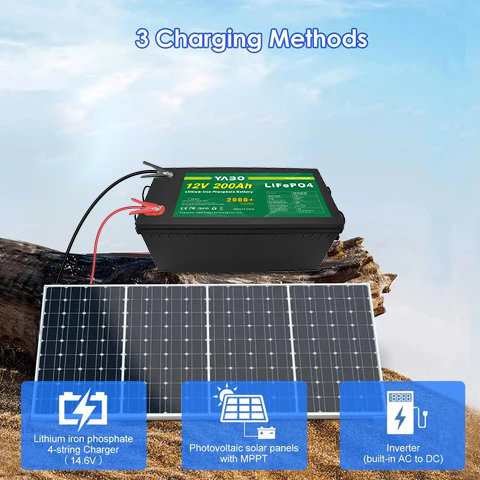






Why is My LiFePO4 Battery Draining So Fast?
Why is My LiFePO4 Battery Draining So Fast?

LiFePO4 Battery (Lithium Iron Phosphate Batteries) have become a popular choice for a wide range of applications, from solar energy storage systems to electric vehicles and portable devices. Known for their long lifespan, stability, and safety, LiFePO4 batteries have largely been favored over traditional lead-acid and other lithium-based batteries. However, users sometimes encounter an issue where their LiFePO4 battery seems to drain faster than expected, leading to frustration and confusion. In this article, we’ll explore some common causes of rapid battery drainage in LiFePO4 batteries and offer suggestions on how to diagnose and address these problems effectively.
1. Understanding Battery Capacity and Depth of Discharge (DoD)
One possible reason for a LiFePO4 battery draining faster than anticipated could be a misunderstanding of the battery’s capacity and Depth of Discharge (DoD). LiFePO4 batteries typically have a high usable capacity, with the ability to be discharged up to 80-90% without suffering significant damage. However, if the battery is consistently discharged beyond this range, it may affect the longevity and performance of the battery. Regularly over-discharging a LiFePO4 battery can cause accelerated wear and may result in reduced runtime, making it seem like the battery is draining faster than it should.
LiFePO4 batteries are relatively temperature-resistant compared to other lithium batteries, but extreme temperatures can still impact performance. Cold weather, in particular, can reduce the effective capacity of a LiFePO4 battery, making it drain faster under normal use. In temperatures below freezing, the chemical reactions within the battery slow down, reducing energy output. Conversely, operating the battery at high temperatures can also cause degradation, potentially reducing its overall lifespan. If you’re experiencing faster drainage in very hot or cold environments, try to maintain your battery within its optimal temperature range, typically between 0°C and 45°C, for the best performance.
Parasitic loads—small, continuous power draws on the battery even when the device is turned off—can significantly impact LiFePO4 battery performance. These loads may include devices like chargers, inverters, or even certain vehicle components that slowly drain the battery over time. Checking for these small loads and disconnecting them when the battery is not in active use can help conserve power and extend battery life. For example, in RVs or boats, leaving the battery connected to devices with "standby" power modes can cause unexpected drainage, making it important to monitor and disconnect these devices when not in use.
Improper charging is another common cause of faster-than-expected drainage in LiFePO4 batteries. Using an incompatible or inefficient charger, or charging the battery to 100% too frequently, can reduce performance. LiFePO4 batteries do not require a complete charge to operate effectively and generally last longer when charged to around 80-90% of their full capacity rather than 100%. Additionally, chargers designed for other lithium battery types or lead-acid batteries may not be optimized for LiFePO4 chemistry, potentially causing incomplete or inconsistent charges. Using a charger specifically designed for LiFePO4 batteries is key to maintaining their health and maximizing their runtime.
LiFePO4 batteries are designed to last for many charge cycles—typically around 2,000-3,000 cycles before noticeable degradation occurs. However, if the battery is used frequently or exposed to harsh environmental conditions, its capacity may degrade over time. A degraded battery will hold less charge and thus appear to drain faster. For older batteries, this reduced capacity is a natural part of the lifecycle. Regular users of LiFePO4 batteries should monitor cycle count and battery health to understand when replacement may be necessary.
To maximize the performance and lifespan of your LiFePO4 battery, consider implementing the following practices:
Avoid fully discharging or charging the battery; aim to keep it within a 20-90% charge range.
Store and operate the battery in moderate temperature conditions whenever possible.
Disconnect any parasitic loads when the battery is not in use to avoid unnecessary drain.
Invest in a high-quality charger that is specifically designed for LiFePO4 batteries.
Keep an eye on the battery’s cycle count and be aware of gradual capacity loss as the battery ages.
Conclusion
While LiFePO4 batteries are known for their durability and stability, understanding the factors that contribute to rapid drainage can help users optimize performance. By keeping the battery within recommended discharge levels, maintaining efficient charging practices, and being mindful of environmental factors, users can avoid the most common pitfalls associated with rapid drainage. In cases where drainage issues persist, consulting with a professional or contacting the battery manufacturer can provide additional insight and guidance. Taking proactive steps can ensure that your LiFePO4 battery delivers long-lasting, reliable performance for years to come.








